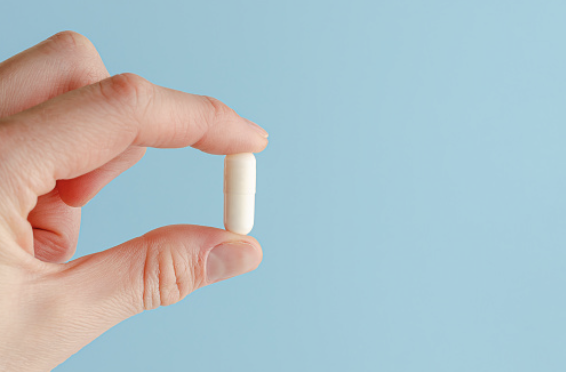For the primary time, researchers have created mice with two biologically male folks by way of manipulating the chromosomes inside of a stem mobile. Katsuhiko Hayashi, a stem mobile biologist at Kyushu College in Japan, introduced the brand new analysis on March 8 on the 3rd Global Summit on Human Genome Modifying on the Francis Crick Institute in London.
The brand new announcement marks the primary time that researchers have controlled to show a stem mobile from an grownup male mouse into an egg. It’s a brand new variation on what scientists name in vitro gametogenesis. All the way through in vitro gametogenesis, researchers create gametes (sperm and egg cells) from triggered pluripotent stem cells, which might be unspecialized cells transformed from frame tissue that researchers can then manipulate into, say, blood cells or neurons. Even if the development raises the likelihood that males might sooner or later have the ability to have organic youngsters in combination, this sort of strive stays a ways off, researchers emphasize.
Up to now egg mobile advent started with stem cells from a feminine animal. However Hayashi and his group used stem cells from a male mouse as an alternative. The researchers discarded the Y chromosome and duplicated the X chromosome. They then embedded it in a man-made ovary that used to be additionally comprised of stem cells. Within the ovary, the manipulated mobile advanced into an egg mobile, or oocyte. Hayashi and his colleagues transplanted 630 embryos shaped from such egg cells into surrogate mice. This led to seven residing puppies that grew usually and had been fertile as adults, he stated within the March 8 presentation.
“I believe it’s obviously very initial analysis,” says Evelyn Telfer, a reproductive biologist on the College of Edinburgh in Scotland, who used to be no longer concerned within the new analysis. She says she discovered the paintings compelling and appreciates the perception it provides into how organisms reproduce, however she notes that the analysis has no longer but been printed in a systematic magazine and that the presentation skimmed over technical main points. (On March 15, after Telfer used to be interviewed for this newsletter, the analysis used to be printed in Nature.)*
Telfer is especially involved by way of how few of the factitious egg cells grew into residing mice. “Even if they get fairly a large number of eggs, those eggs are obviously no longer absolutely competent as a result of they truly get an excessively, very small share of them which can be able to being fertilized and forming embryos,” she says. “It’s an enormous success, but it surely’s nonetheless a sign that there are issues of those in vitro–derived oocytes from the stem cells, so there’s a large number of paintings that must be carried out.”
And making an attempt the methodology in people can be considerably harder than the mouse paintings Hayashi described, as he famous all the way through the presentation. “There’s a giant distinction between a mouse and a human,” he stated. (Hayashi didn’t reply to Medical American’s request for remark.)
Human cells grow a lot more slowly than mouse cells, and scientists have honed complicated processes for synthetic mouse replica within the lab, Telfer says. For human cells, those programs aren’t as advanced. Telfer notes that during her personal paintings, which depends upon herbal precursors to human egg and sperm cells, effectively rising mature gametes stays tough.
“I believe we’re at a degree the place the mouse paintings is fabulous, however shifting this house alongside to different species has confirmed to be much more tough,” Telfer says. “There are demanding situations at each and every degree.”
And researchers haven’t but effectively produced human egg and sperm cells from stem cells, says Kotaro Sasaki, a biomedical scientist on the College of Pennsylvania, who has labored with Hayashi prior to now however used to be no longer concerned within the new analysis. “In people, we’re nonetheless so at the back of,” he says, even though he thinks that generating human gametes will turn out to be technically possible inside of possibly a decade.
Mimicking in people the chromosome-swapping feat that units Hayashi’s new paintings aside will require further building time. Sasaki expects that deleting Y chromosomes and duplicating X chromosomes received’t occur just about as easily in human cells. Hayashi’s group manipulated the chromosomes by way of including a compound that encourages chromosomal adjustments, however Sasaki says that the similar method in people may purpose many further mutations alongside the best way—a few of which might be bad.
Sasaki would additionally like to peer Hayashi’s methodology examined in monkeys sooner than any makes an attempt are made the use of human cells, a lot much less sooner than scientists create any human embryos. He cautions that some questions of safety may turn out to be obvious best in a 2d technology. “The use of this for reproductive functions … comes with loads and plenty of moral and criminal problems, which we wish to significantly deal with,” he says.
*Editor’s Word (3/15/23): This sentence used to be added after e-newsletter to elucidate that the analysis has now been printed.
I. Glenn Cohen, a regulation professor at Harvard Regulation Faculty who makes a speciality of clinical ethics, says that the brand new analysis means that society as a complete must have conversations about in vitro gametogenesis, its legislation and its moral implications faster fairly than later.
The ones conversations might rely at the actual makes use of of the generation. All the way through his presentation, Hayashi particularly referenced best Turner syndrome, a unprecedented situation related to infertility through which any person’s cells include just one X chromosome, as a possible human use case for the methodology. However facilitating childbirth for LGBTQ+ other folks is also a possible software with upper call for, says Telfer, who works with sufferers with Turner syndrome.
And the best way the methodology may open replica to {couples} with out an XX-XY chromosomal pair raises a novel query, Cohen stated in an e mail to Medical American. “To what extent does [in vitro gametogenesis] constitute without equal in equality for same-sex {couples}?” he wrote. “Will have to this turn out to be technologically possible for human beings,” he requested, “will have to same-sex {couples} have a proper to take action?”
Supply Through https://www.scientificamerican.com/article/mice-with-two-fathers-researchers-develop-egg-cells-from-male-mice1/



